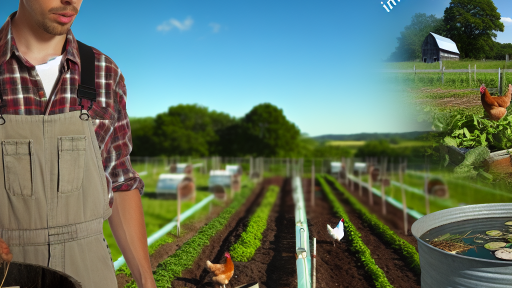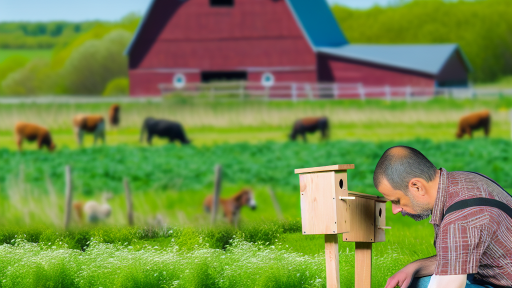Understanding Biodiversity and Its Significance in Ecosystems
Defining Biodiversity
Biodiversity refers to the variety of life on Earth.
It encompasses species diversity, genetic diversity, and ecosystem diversity.
This variety plays a crucial role in maintaining ecological balance.
The Importance of Biodiversity
Biodiversity is vital for ecosystem productivity.
Different species contribute to nutrient cycling and soil formation.
Additionally, diverse ecosystems can better withstand environmental pressures.
Interactions Within Ecosystems
Species often interact in complex ways within their environments.
These interactions include predation, competition, and symbiosis.
Such relationships help regulate population dynamics and promote stability.
Biodiversity and Soil Health
Biodiversity directly influences soil health and fertility.
Various organisms, such as bacteria and earthworms, help decompose organic matter.
This process enriches the soil with essential nutrients.
Furthermore, diverse plant roots enhance soil structure and aeration.
Enhancing Ecosystem Resilience
High levels of biodiversity enhance ecosystem resilience.
This resilience allows ecosystems to recover from disturbances like droughts or floods.
Transform Your Agribusiness
Unlock your farm's potential with expert advice tailored to your needs. Get actionable steps that drive real results.
Get StartedConsequently, maintaining biodiversity is crucial for sustainable agriculture.
Overview of Soil Health
Definition of Soil Health
Soyl health refers to the ability of soil to function effectively.
This includes supporting plant growth and promoting ecosystem health.
Healthy soil maintains structural integrity and nutrient availability.
It also supports a diversity of organisms that contribute to soil processes.
Importance of Soil Health in Agriculture
Soyl health plays a critical role in agricultural productivity.
Healthy soil enhances crop yield and quality.
It improves water retention and reduces erosion risk.
Moreover, healthy soil can mitigate flooding and drought impacts.
Biodiversity and Soil Health Connection
Biodiversity directly supports soil health through various mechanisms.
Microorganisms break down organic matter and nutrients in soil.
This process enhances nutrient cycling essential for plant growth.
Additionally, diverse plant roots promote soil structure and stability.
Strategies to Maintain Soil Health
Farmers can adopt several practices to enhance soil health.
- Implement crop rotation to improve nutrient diversity.
- Use cover crops to prevent soil erosion and enhance organic matter.
- Minimize tillage to protect soil structure and microbial communities.
These strategies support sustainable agricultural practices.
The Relationship Between Biodiversity and Soil Microbial Communities
Understanding Soil Microbial Communities
Soil microbial communities play a crucial role in soil health.
These communities consist of bacteria, fungi, and other microorganisms.
They facilitate nutrient cycling and organic matter decomposition.
Moreover, microorganisms improve soil structure and water retention.
The Impact of Biodiversity on Soil Microbes
Biodiversity enhances the resilience of soil microbial communities.
A diverse range of species can better adapt to environmental changes.
As a result, they support various soil functions more effectively.
For example, diverse microbes can collectively break down complex organic materials.
Interrelationships Between Organisms
Biodiversity fosters interactions among various soil organisms.
Showcase Your Farming Business
Publish your professional farming services profile on our blog for a one-time fee of $200 and reach a dedicated audience of farmers and agribusiness owners.
Publish Your ProfilePlant roots release exudates that feed beneficial soil microbes.
Consequently, these microbes improve nutrient availability for plants.
Additionally, mutualistic relationships enhance overall soil health.
Impacts of Reduced Biodiversity
Conversely, reduced biodiversity can destabilize microbial communities.
Less diversity leads to weakened soil functions and productivity.
For instance, soils with lower microbial diversity may struggle to retain moisture.
This instability heightens vulnerability to diseases and nutrient depletion.
Practical Applications in Agriculture
Farmers can enhance soil health by maintaining microbial diversity.
Implementing crop rotation fosters diverse microbial populations.
Cover cropping can also amplify soil biodiversity effectively.
These practices contribute to sustainable agriculture and food security.
Delve into the Subject: Soil Moisture Conservation Tips for Farmers
Biodiversity’s Role in Soil Health
Enhancing Soil Structure
Plant diversity significantly enhances soil structure.
Different root systems create varied soil pore sizes.
This variation improves water infiltration rates.
As a result, soil erosion decreases substantially.
Moreover, diverse plant roots stabilize the soil effectively.
They help prevent compaction and promote aeration.
This structural diversity supports various soil organisms.
Promoting Nutrient Cycling
Plant diversity plays a critical role in nutrient cycling.
Different species have unique nutrient uptake abilities.
Thus, they maximize nutrient use efficiency.
This leads to a balanced nutrient supply in the soil.
Moreover, the decomposition of different plant matter enriches soil fertility.
Microbial communities thrive on diverse organic materials.
Enhanced microbial activity improves nutrient availability.
Case Studies and Real-World Applications
Numerous studies illustrate the benefits of plant diversity.
A farm in Iowa witnessed improved yields through diverse cropping systems.
In California, vineyards benefited from cover cropping strategies.
Integrating various plants into agricultural practices yielded positive outcomes.
Farmers reported healthier soils and increased resilience against pests.
Implications of Investing in Biodiversity
Investing in biodiversity leads to healthier soils.
Healthier soils support sustainable agriculture.
Ultimately, enhancing plant diversity is essential for soil health.
You Might Also Like: Innovative Waste Management Ideas for Farmers
Influence of Fauna Diversity on Soil Aeration and Organic Matter Decomposition
Role of Soil Fauna
Soyle fauna refers to the diverse organisms living in the soil.
These organisms range from microscopic bacteria to larger animals like earthworms.
Each organism plays a unique role in maintaining soil health.
They facilitate essential processes like aeration and organic matter decomposition.
Aeration Enhancement
Diverse soil fauna improve soil structure through their activities.
Showcase Your Farming Business
Publish your professional farming services profile on our blog for a one-time fee of $200 and reach a dedicated audience of farmers and agribusiness owners.
Publish Your ProfileFor instance, earthworms create channels in the soil as they burrow.
These channels enhance water infiltration and root penetration.
Thus, soil aeration increases, allowing plants better access to oxygen.
Moreover, improved aeration fosters healthier microbial communities.
Decomposition of Organic Matter
Soil fauna plays a crucial role in breaking down organic matter.
Decomposers like fungi and bacteria thrive on dead plant and animal material.
Additionally, larger organisms like beetles help shred this material into smaller pieces.
This process accelerates decay and nutrient cycling within the soil.
Impacts of Reduced Fauna Diversity
Loss of fauna diversity can severely affect soil health.
For example, limited organism types lead to poor soil structure.
This situation can reduce soil aeration and increase compaction.
Consequently, organic matter decomposition slows down, affecting nutrient availability.
Benefits of Diverse Soil Fauna
A diverse group of soil organisms enhances resilience against environmental stresses.
It increases the overall nutrient cycling capacity of the soil.
Furthermore, diverse fauna can improve the soil’s ability to hold water.
A rich fauna community supports healthier ecosystems.
Learn More: Sustainable Crop Rotation Plans for Modern Farmers

The Role of Biodiversity in Pest and Disease Regulation in Soils
Understanding Soil Biodiversity
Soil biodiversity includes various organisms, from bacteria to larger animals.
Each organism plays a unique role in the ecosystem.
Together, they contribute to the soil’s health and resilience.
Natural Pest Control Mechanisms
Biodiversity helps regulate pest populations naturally.
Predatory insects, such as ladybugs, keep harmful pests in check.
Additionally, soil microbes can suppress soil-borne pathogens.
For example, beneficial fungi can inhibit the growth of disease-causing organisms.
Enhancing Soil Resilience
A diverse soil environment is more resilient to pest outbreaks.
When one species declines, others can often fill its ecological role.
This balance prevents pest populations from becoming overwhelming.
Moreover, diverse plantings can attract a range of beneficial organisms.
Pest Management Strategies
Integrating biodiversity into farming strategies enhances pest management.
Crop rotation encourages diverse soil life and disrupts pest cycles.
Cover crops also provide habitats for beneficial organisms.
Furthermore, maintaining hedgerows can attract natural pest predators.
Real-World Applications
Farmers, like Maria Gomez, emphasize biodiversity in their practices.
Gomez uses companion planting to control pests effectively.
Moreover, she integrates organic matter to improve soil organism diversity.
The Future of Pest and Disease Management
Emphasizing biodiversity is vital for sustainable agriculture.
As challenges increase, diverse ecosystems will provide natural solutions.
Consequently, enhancing soil biodiversity can support global food security.
You Might Also Like: Designing Farm Layouts for Optimal Water Use
Case Studies Showcasing Successful Biodiversity Practices in Soil Management
Improving Soil Quality Through Diverse Crop Rotations
Diverse crop rotations significantly enhance soil health.
Showcase Your Farming Business
Publish your professional farming services profile on our blog for a one-time fee of $200 and reach a dedicated audience of farmers and agribusiness owners.
Publish Your ProfileFor example, Greenfields Farm implemented a three-year rotation of legumes, grains, and cover crops.
This practice increased nitrogen levels in the soil.
Consequently, the farm reported a 30% increase in yield over three years.
Enhancing Soil Microbial Communities with Organic Amendments
Organic amendments boost soil biodiversity and health.
At Riverbank Organics, the team introduced compost and biochar to their fields.
This approach effectively enhanced microbial populations.
As a result, they observed a reduction in soil diseases and improved crop resilience.
Integrating Livestock into Sustainable Cropping Systems
Integrating livestock can improve soil fertility.
Sunny Acres used a rotational grazing system alongside crop production.
This system allowed for natural fertilization through manure distribution.
The farm noted increased soil organic matter and better water retention.
Implementing Agroforestry for Soil Protection
Agroforestry practices provide multiple benefits for soil health.
Forest Edge Farm incorporated trees into their crop production system.
These trees helped reduce soil erosion and improve moisture retention.
Furthermore, they supported a diverse ecosystem beneficial for crops.
Utilizing Cover Crops to Prevent Soil Erosion
Cover crops play a vital role in preventing erosion.
Mountain View Growers adopted a strategy of planting cover crops during off-seasons.
This practice effectively reduced soil loss during heavy rains.
Additionally, it improved nutrient cycling and soil structure.
Strategies to Enhance Biodiversity for Improved Soil Health in Agricultural Systems
Promoting Diverse Crop Rotations
Diverse crop rotations boost soil health significantly.
They improve nutrient cycling and reduce pest populations.
Crops with varying root structures enhance soil aeration.
Furthermore, diverse plants contribute organic matter through root decay.
Integrating Cover Crops
Cover crops play a vital role in enhancing soil biodiversity.
They protect against soil erosion during off-seasons.
Legumes in cover crops fix nitrogen, benefiting subsequent crops.
Moreover, they provide habitat for beneficial soil organisms.
Utilizing Organic Amendments
Organic amendments enrich soil microbiomes.
Compost and manure add essential nutrients and microorganisms.
These materials enhance microbial activity and soil structure.
Regular application leads to sustainable soil fertility.
Practicing Reduced Tillage
Reduced tillage minimizes soil disturbance and promotes biodiversity.
It preserves the habitat of earthworms and beneficial insects.
Moreover, it enhances soil structure and moisture retention.
Consequently, crops benefit from healthier root systems.
Implementing Agroforestry Systems
Agroforestry integrates trees with crops and livestock.
This system increases species diversity above and below ground.
Diverse root systems help stabilize soil and improve nutrients.
Furthermore, trees provide shade and habitat for wildlife.
Encouraging Natural Pest Predators
Encouraging natural predators reduces the need for pesticides.
Showcase Your Farming Business
Publish your professional farming services profile on our blog for a one-time fee of $200 and reach a dedicated audience of farmers and agribusiness owners.
Publish Your ProfileBirds and beneficial insects help control pest populations.
This practice promotes a balanced ecosystem in farmland.
Additionally, biodiversity enhances the resilience of crops.
Implementing Crop Diversity in Planting
Planting multiple crop species boosts ecosystem resilience.
This strategy minimizes the risks associated with monocultures.
It helps in pest and disease management naturally.
Furthermore, different crops utilize resources efficiently.
Collaborating with Local Environmental Groups
Collaboration with local groups promotes sustainable practices.
These organizations often provide expertise in biodiversity enhancement.
Educational programs can raise awareness about soil health.
Moreover, partnerships can facilitate the sharing of resources.




